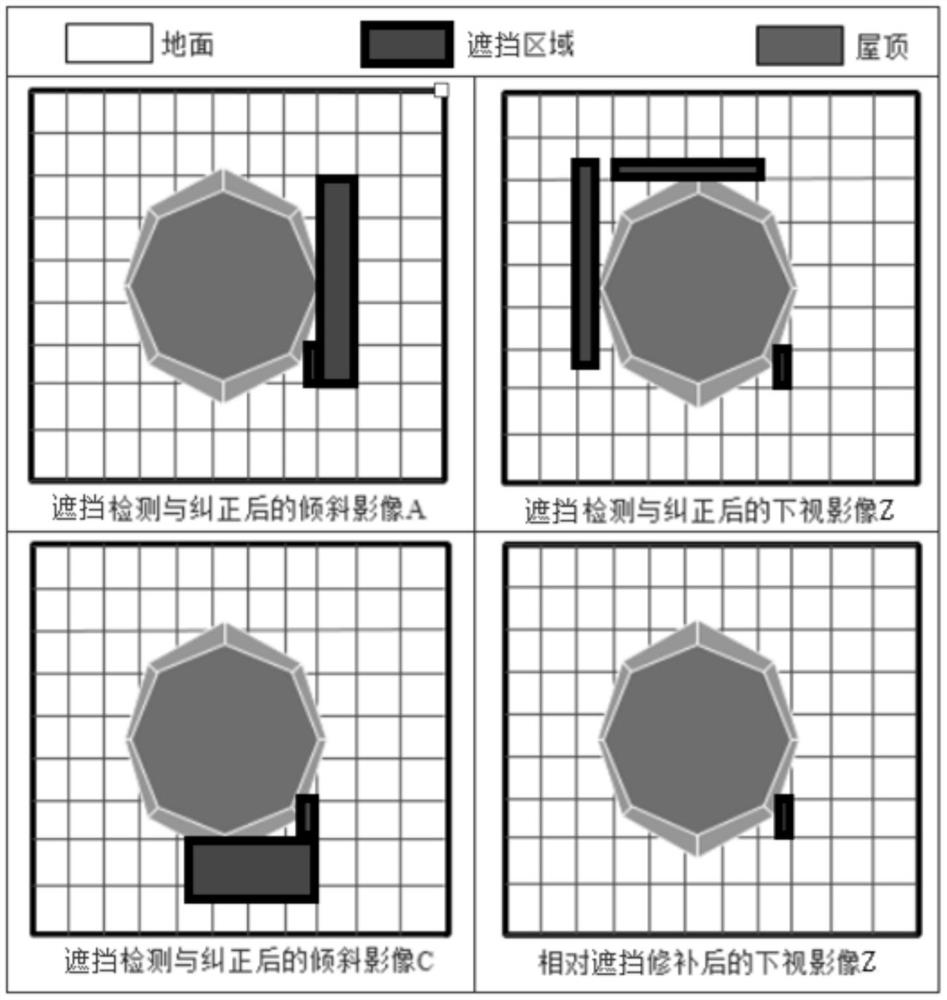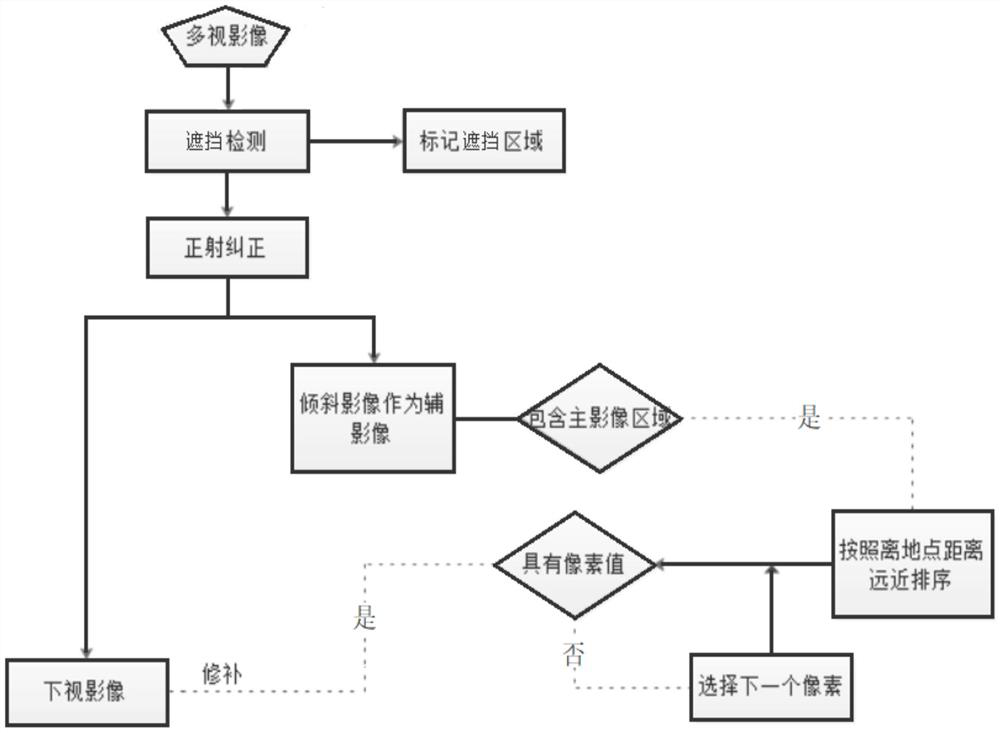Five-lens oblique camera TDOM shielding area repairing method
A technology of occlusion area and repair method, which is applied in the field of TDOM occlusion area repair and five-lens tilt camera TDOM occlusion area repair field, can solve the problems of unreal, large storage space, affecting the basic functions of images, etc., and achieves low production cost and data volume. Large, multi-viewing effects
- Summary
- Abstract
- Description
- Claims
- Application Information
AI Technical Summary
Problems solved by technology
Method used
Image
Examples
Embodiment Construction
[0071] The technical solution of the five-lens tilt camera TDOM occlusion area restoration method provided by the present application will be further described below in conjunction with the accompanying drawings, so that those skilled in the art can better understand the present application and implement it.
[0072] Digital orthophotos use digital elevation models to perform orthorectification on oriented images, and do not consider spatial objects such as artificial buildings, resulting in the central projection deformation of these objects still existing. At present, people's requirements for the accuracy of orthophotos are getting higher and higher. Traditional orthophotos can no longer meet people's requirements, and TDOM (True Orthophotos) has gradually been paid attention to. TDOM uses DSM (Digital Surface Model) to perform orthorectification on the oriented image, and tall objects such as buildings are corrected to the correct position, and at the same time, it has text...
PUM
 Login to View More
Login to View More Abstract
Description
Claims
Application Information
 Login to View More
Login to View More - R&D
- Intellectual Property
- Life Sciences
- Materials
- Tech Scout
- Unparalleled Data Quality
- Higher Quality Content
- 60% Fewer Hallucinations
Browse by: Latest US Patents, China's latest patents, Technical Efficacy Thesaurus, Application Domain, Technology Topic, Popular Technical Reports.
© 2025 PatSnap. All rights reserved.Legal|Privacy policy|Modern Slavery Act Transparency Statement|Sitemap|About US| Contact US: help@patsnap.com



